New Delhi: It’s taking skin care and coffee culture to another level. Matcha is all the rage in NCR cafes now.
“I ditched black coffee for collagen matcha,” said Preeti Duggal, a 27-year-old fashion entrepreneur from Gurugram. “No more caffeine crashes, I sleep like a baby, and my skin is clearer than ever.”
Duggal makes a pit stop at Espressos AnyDay every morning before heading to her boutique, collagen matcha in hand. It’s her daily ritual. Her wellness badge of honour.
Across Delhi-NCR, matcha mania is real. The green tea drink from Japan is now the newest frontier in healthy beverages. While millennials once flaunted their cold brews and americanos, Gen Z, especially women, has fully embraced the matcha moment. It’s yet another hand-me-down trend of the West, occasionally served up with a tropical touch like coconut or mango.
When pop darling Sabrina Carpenter gushed about her love for matcha lattes, social media went wild. Indian fans, naturally, followed suit. Add anime fandoms and Instagram aesthetics to the mix, and the result is a full-blown green drink obsession. Ordering black coffee once felt edgy in a friend group. Now, it’s matcha that turns heads. In less than a year, it has transformed into a lifestyle flex—a symbol of calm, clean energy and cool-girl status.
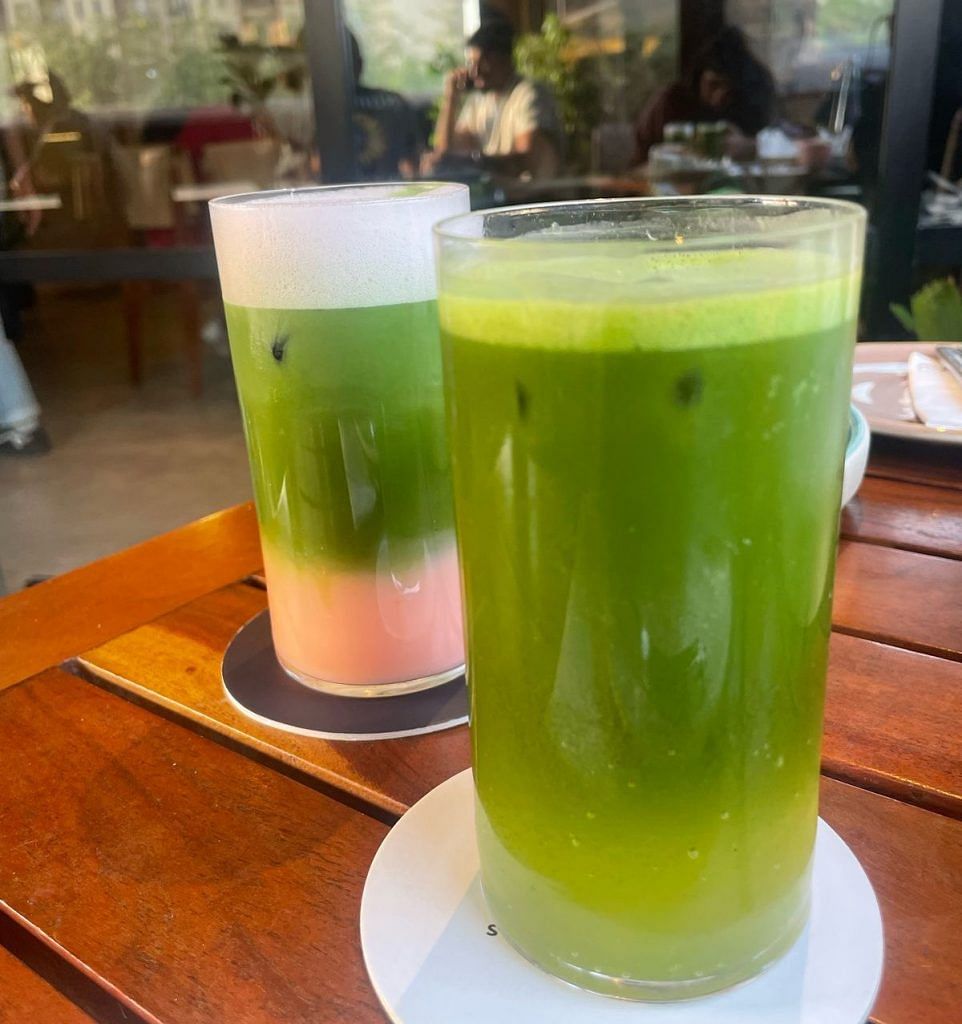
Cafés across the region are riding the wave—including Green Neko in New Friends Colony, Got Tea with branches from Punjabi Bagh to Greater Kailash, Café Tesu in Essex Farms, and Espressos AnyDay in in DLF Phase IV.
They’re not just dishing out the usual oat milk and matcha combos but experimenting with bold new flavours that balance matcha’s earthy tones. Zingy citrus, berry, and watermelon blends are flying off the counters.
“Honestly, 60–70 per cent of it is just for the ’gram [Instagram],” laughed Grace Muivah, brand lead of Espressos AnyDay, which was launched in November last year by her longtime friends Rajan and Deepika Sethi.
Now, nearly half their customers come in for matcha. No matter the hour or day, the 30-seater café stays packed—with at least one glass of matcha perched on every table among coffees and shakes.
They’re already eyeing expansion, with two new outlets in the pipeline for Golf Course Road and HQ27, plus upcoming spots in Greater Kailash’s M Block and Mohali.
Also Read: Delhi’s new speakeasy culture. Hidden bars, secret doors, passcodes & artsy cocktails
Delhi NCR – the matcha playground
What makes Delhi-NCR the perfect breeding ground for matcha’s rise is its mix of curiosity, growing health consciousness, and a strong appetite for global trends.
This is a city where cold brews meet kombucha, and Korean skincare routines are practically mainstream. So it’s no surprise that matcha has found fans here.
And cafes are keeping the trend fresh and interesting by getting creative. From citrusy yuzu and skin-boosting collagen to earthy turmeric and dessert-style tiramisu, they are constantly reinventing matcha through bold and playful pairings.
It’s a must for a crowd that gets bored easily and quickly moves on to the next trend. New flavours, seasonal specials, and endless combinations help matcha hold its ground.
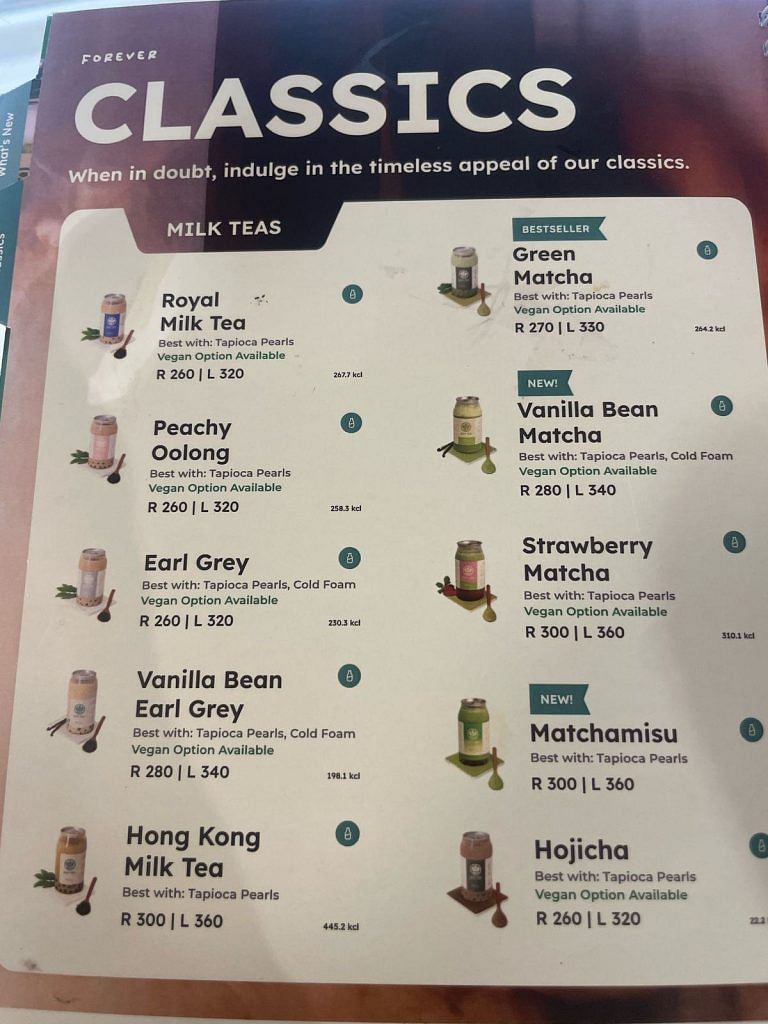
At Espressos AnyDay, Muivah said their menu took a gruelling six months of trial and error to perfect. One of their trickiest experiments was the Iced Coconut Matcha, which Muivah was keen to develop for lactose-intolerant customers and fans of tropical flavours.
Made with matcha powder, coconut cream, and coconut milk, getting the ratios right was no walk in the park.
“It really put our stomachs to the test,” she joked. “There were days we had to make frequent toilet runs—it became a running joke during tastings.”
Beyond its taste and supposed health benefits, matcha’s photogenic personality helps too.
With its bright green colour and thick frothy texture, it’s both eye-catching and intriguing. Scroll through any café’s Instagram feed, and matcha is usually front and centre.
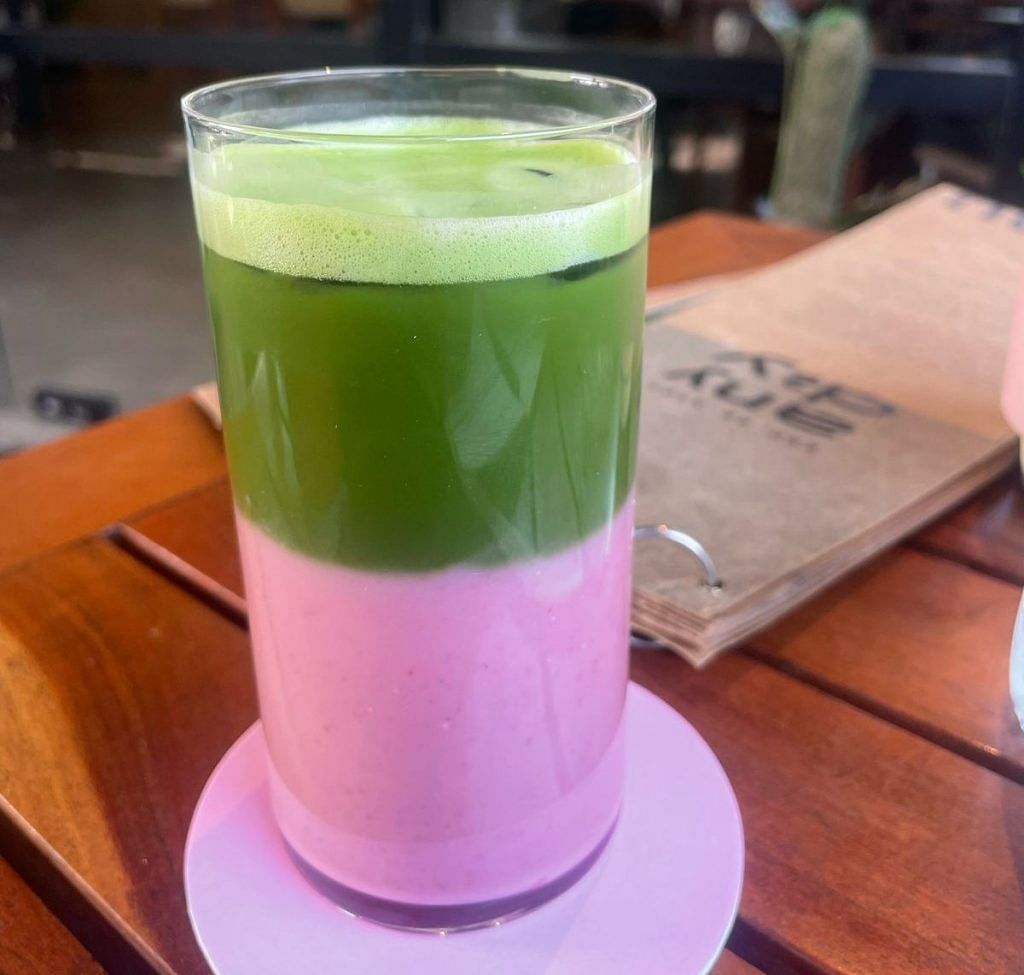
Getting a fix is now no trouble at all. From well-settled spots like Greenr Café and Blue Tokai to niche matcha-focused start-ups, it’s on menus everywhere —iced, blended with oat milk, topped with boba, or served in a ceremonial style.
It doesn’t stop at drinks. Matcha brownies, cookies, and ice cream are also getting popular.
Café owners claim that apart from Mumbai, no other city comes close to NCR’s matcha craze, although they have no hard data to prove it.
“Matcha has crossed over from being just a trend to becoming a subculture for Delhiites,” said Duggal. “I wouldn’t be surprised if chefs start to include it in main course and starter meals.”
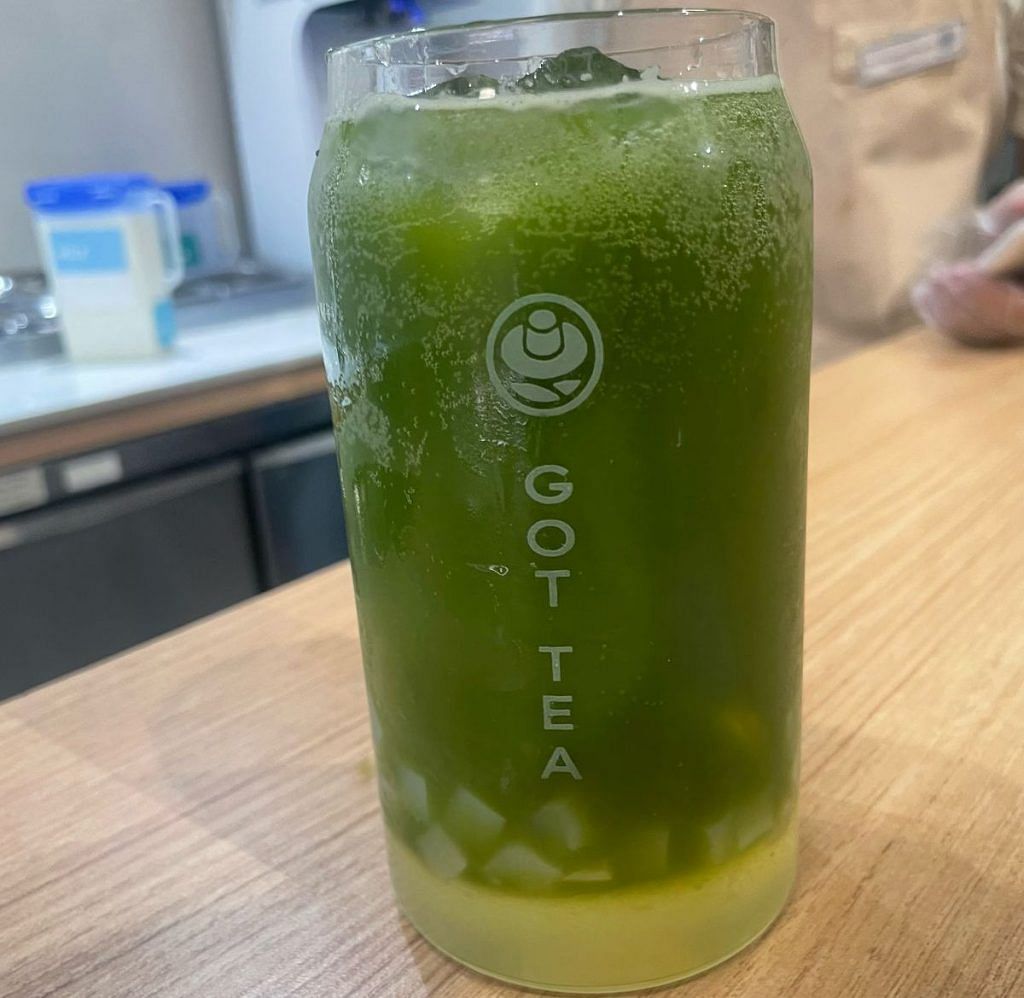
Method to matcha madness
Kharin, the barista at Espressos AnyDay, is prepping a Matcha Americano, which skips the milk and lets the matcha shine on its own. He starts by dipping the chasen, a bamboo whisk, into a glass of water.
“You need to soak the whisk in water first so the bristles soften. Stiff ones won’t achieve that silky texture,” Muivah said. Spoons or electric frothers don’t fit the bill. “Many people use electric frothers to save time, but the heat from the frother ruins the taste of matcha.”
Next, Kharin adds a scoop of matcha into a chawan, a wide and shallow bowl used for whisking. Some matcha kits also have a chashaku—a fine bamboo scoop used to measure just the right amount of powder.

At Espressos AnyDay, matcha demand is growing fast. The café goes through over 3 kilograms of powder a month. Each drink uses around 5–6 grams of pure matcha.
Matcha is finely ground green tea made from specially grown leaves. The best kind—often referred to as ceremonial grade—is made from shade-grown leaves that are handpicked, steamed, dried, and stone-ground into a fine powder.
“Our matcha tastes distinctly different from what most cafes or big coffee chains serve because we source ours directly from Japan,” said Muivah. It is also reflected in the price point, as every variation is priced at Rs 595.
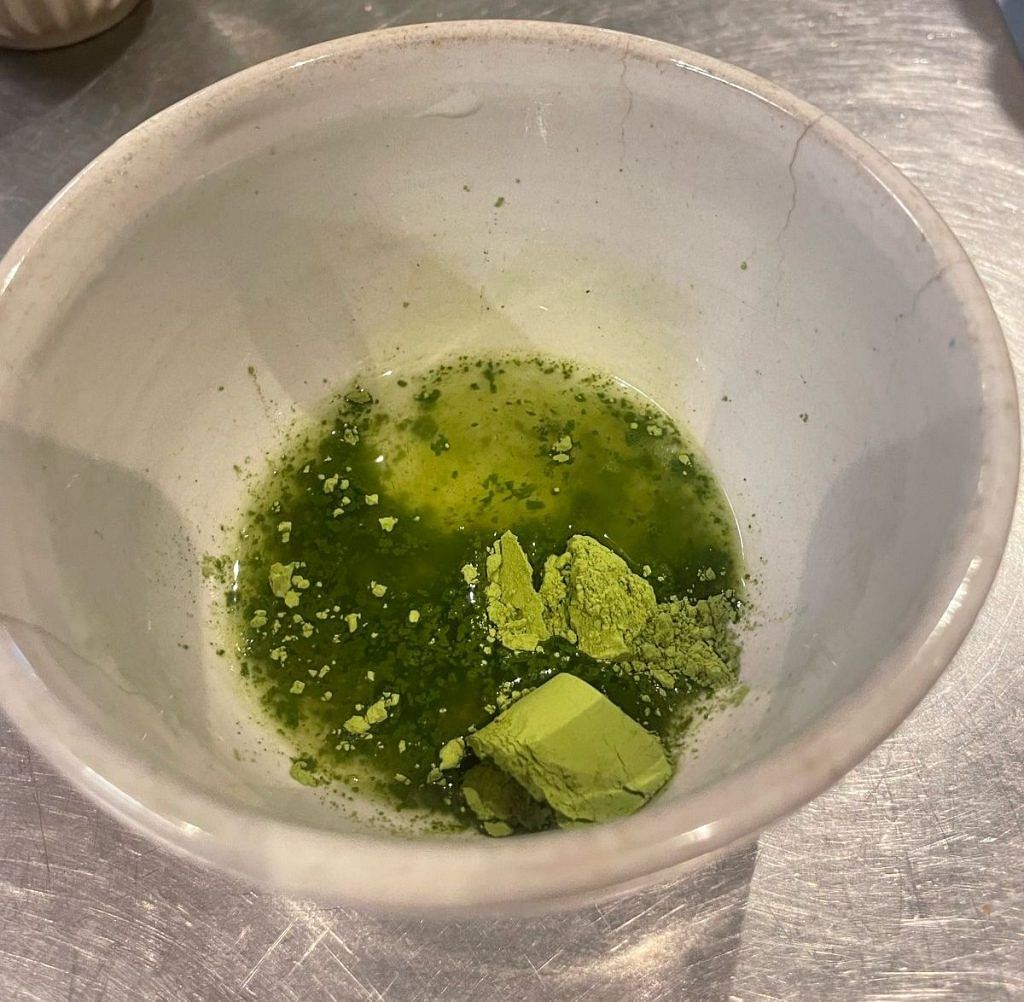
The average starting price of matcha is Rs 350, making it rather more expensive than a regular cup of coffee.
But the real magic lies beyond just high-grade powder. It’s the method that truly matters, from whisking to the temperature setting.
“Temperature is crucial too: too hot, and the matcha turns bitter; too cool, and it loses its creamy complexity,” Kharin said, pouring a small amount of water in the chawan.
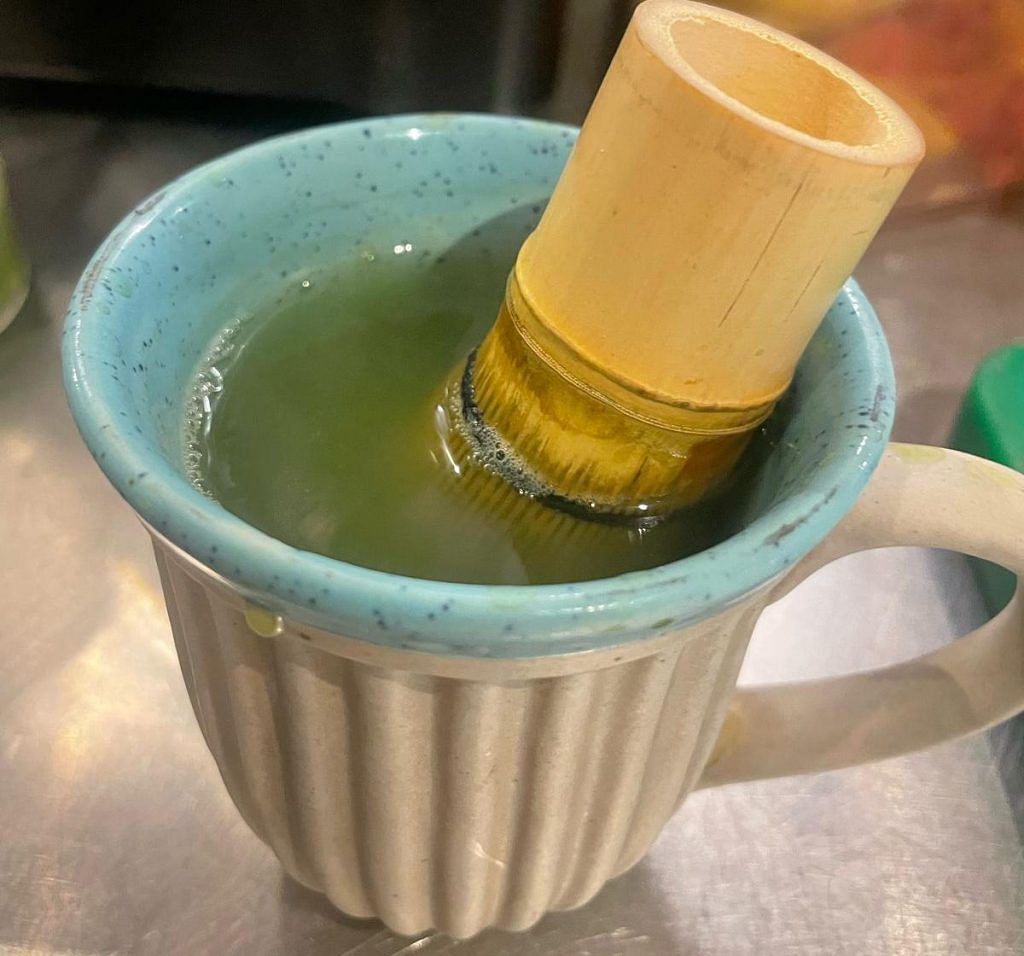
The whisking process — ideally lasting 2 to 3 minutes — is crucial for achieving that signature frothy top. But it’s not the usual clockwise or anti-clockwise motion. It’s more like a kid scribbling all over a page.
“If you don’t whisk it right, you end up with grainy lumps,” Muivah added.
Every single matcha served here is hand-whisked with care. And for serious matcha drinkers, this attention to detail matters.
“I once tried a machine-made matcha at a big coffee chain— it tasted grassy, flat, and honestly undrinkable. I couldn’t finish it,” said Samaie Mehta, a 23-year-old art student who was introduced to matcha by her girlfriend.
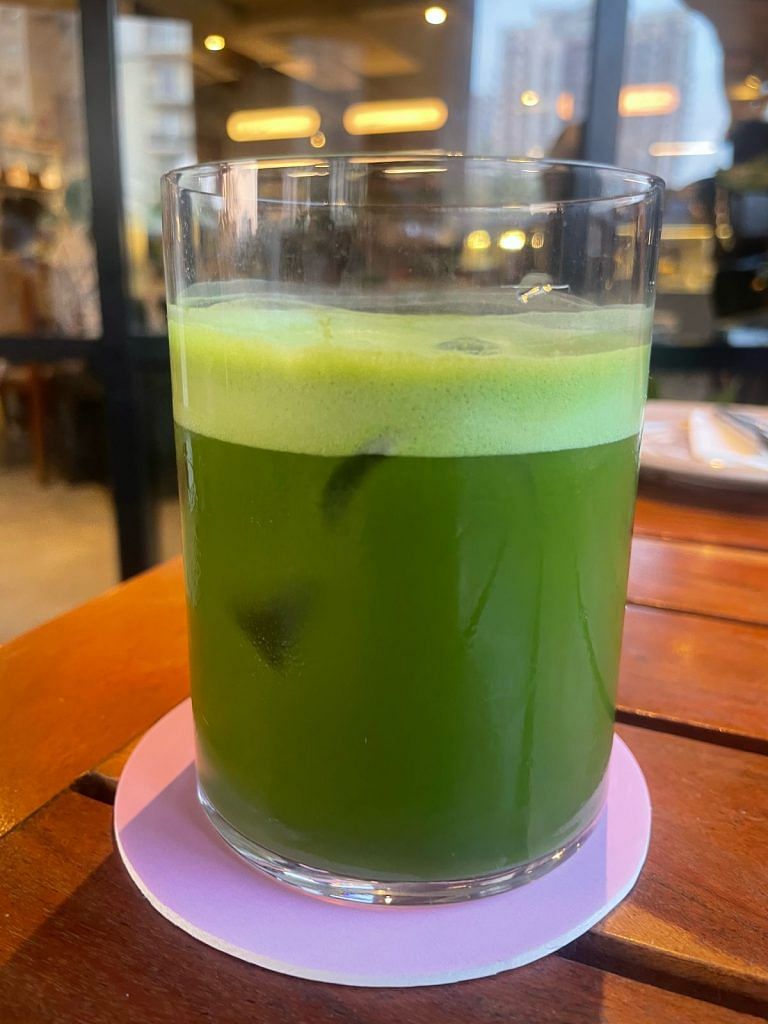
She recalled discovering a video of Bollywood actress Sanya Malhotra whisking matcha in a traditional bowl on Instagram.
“It definitely caught my eye,” said Mehta. “But, I still didn’t understand the process.”
That changed during a lunch date at Espressos AnyDay. Watching the barista whisk matcha live was enough to convince her to try again. This time, it worked.
“It was love at first sip,” she said. “ Got Tea is great too — they experiment with some really fun flavour combinations.”
Also Read: Ahmedabad has a new address for global premium chocolate. A Belgium-returned Gujarati did it
Healthier than coffee?
There’s no denying matcha has a nutritional edge. It’s packed with antioxidants, especially EGCG. But not everyone’s buying the hype.
Some sceptics point to its caffeine content, which, gram for gram, isn’t too far off from coffee.
“It’s just a fad—a show-off drink for women,” scoffed 27-year-old Rishabh Sethi, pulling out his phone at Café Tesu to flash a caffeine comparison.
“It’s basically the same. So how is it any better than coffee?” he asked before turning back to sip his Vanilla Cinnamon Dolce.
And he’s not entirely wrong. Matcha is essentially just green tea with a better PR team. According to nutritionist Isha Khosla, matcha’s caffeine levels are comparable to coffee, although she says it does have benefits.
“Thanks to its chlorophyll content, matcha has a naturally soothing effect on both the gut and the body,” said Khosla. “It’s similar to adaptogens like ashwagandha or ginseng, which can both energise and calm you at the same time.”
Khosla credits matcha’s boom to social media. Just like chia seeds or flaxseeds, which have been around for ages, she said, matcha has exploded in popularity because of how quickly information spreads online.
“It’s essentially just powdered green tea,” the nutritionist added. “There is no magic or anything special about it.”
(Edited by Asavari Singh)



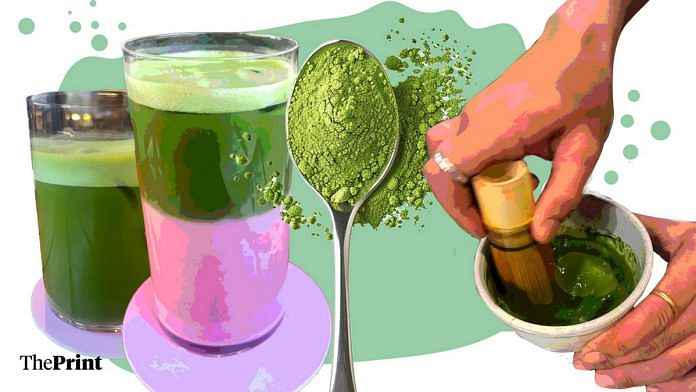



Delhi-NCR youth have pathetic tastes – be it literature or poetry or art or music. Their taste in evrything is cringe-worthy.
They boast of colleges such as LSR, St. Stephen’s, etc. on their resumes but their education leaves a lot to be desired. Usually, it is just a single minded pursuit of academics – to the point of exclusion of everything else. Hence, the lack of finesse, sensitivity and sophistication.